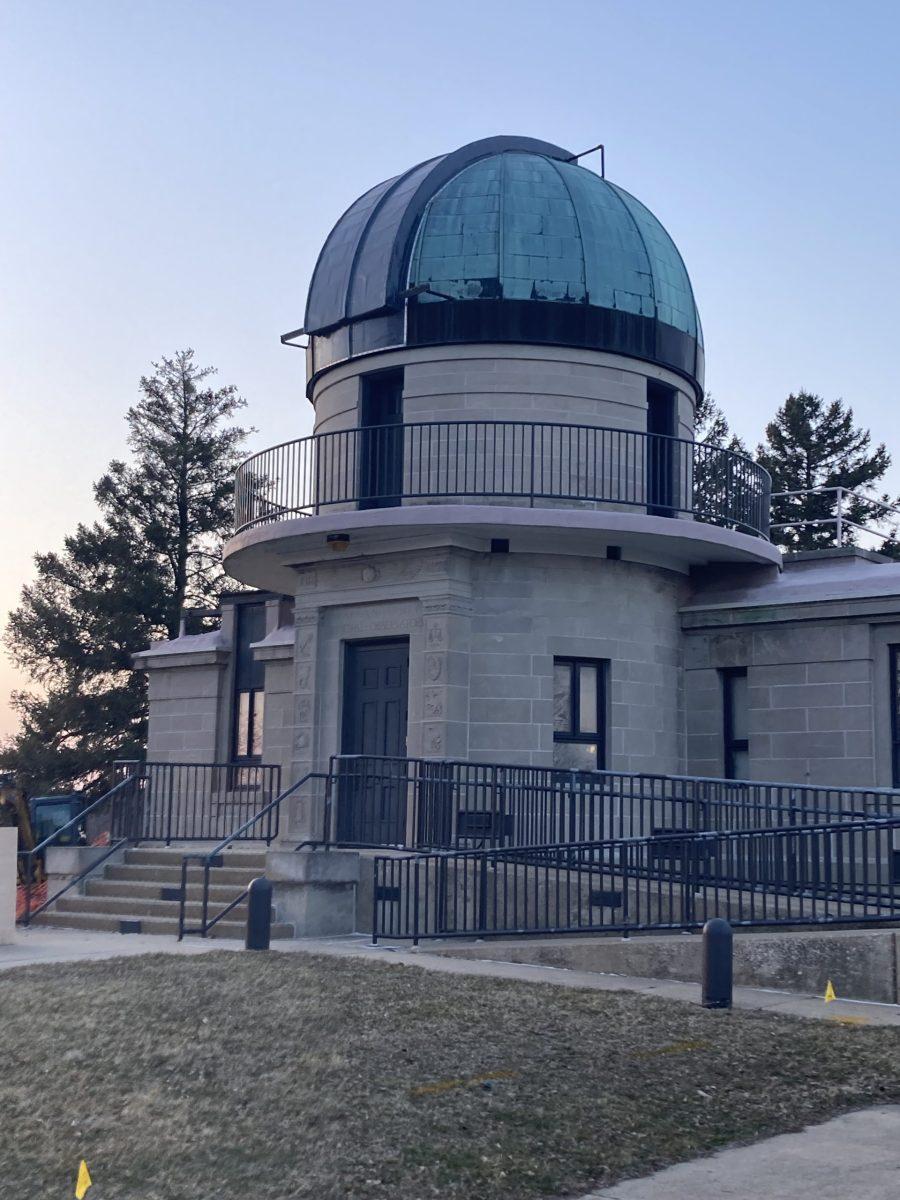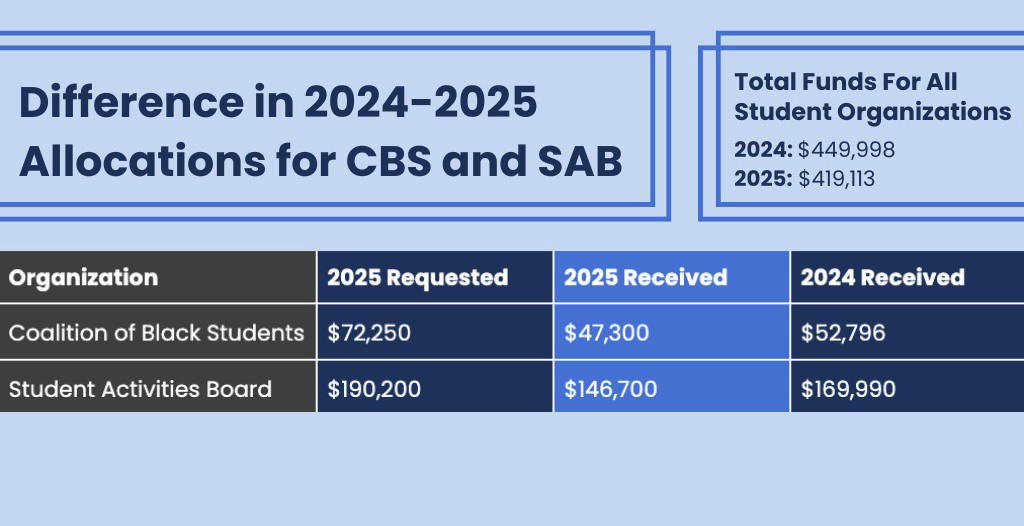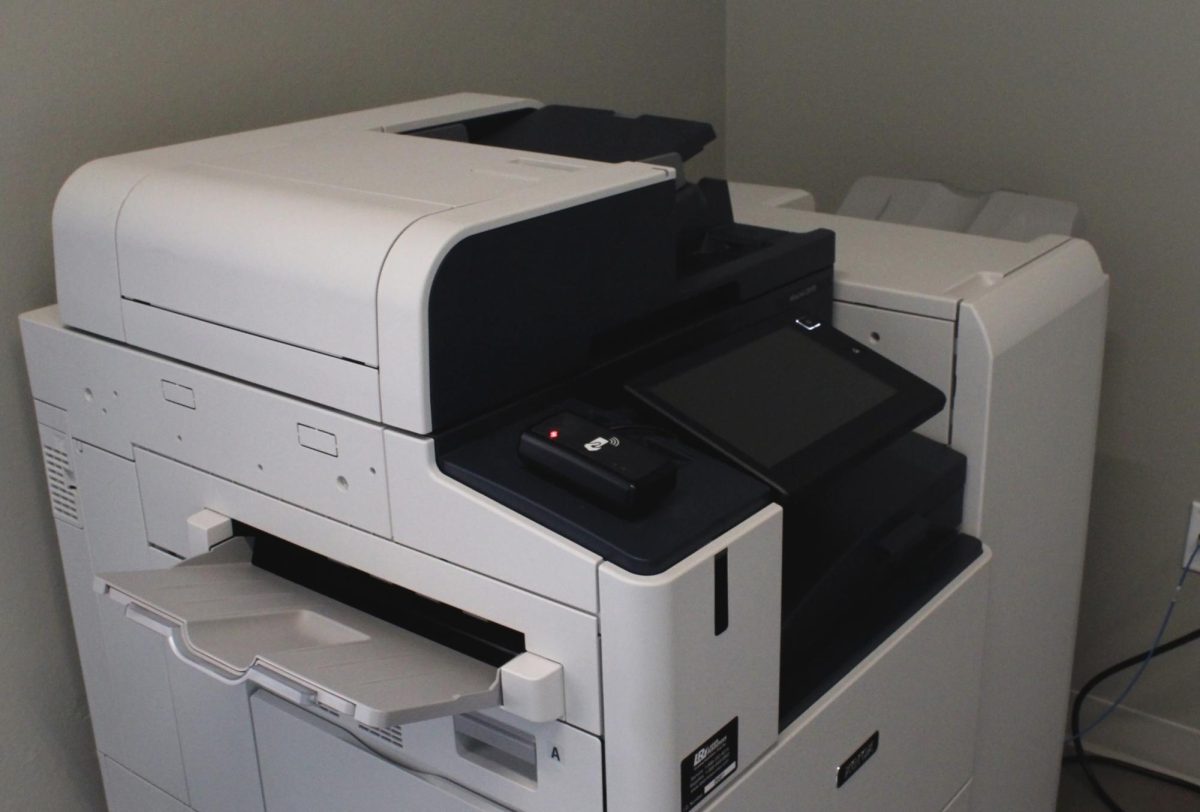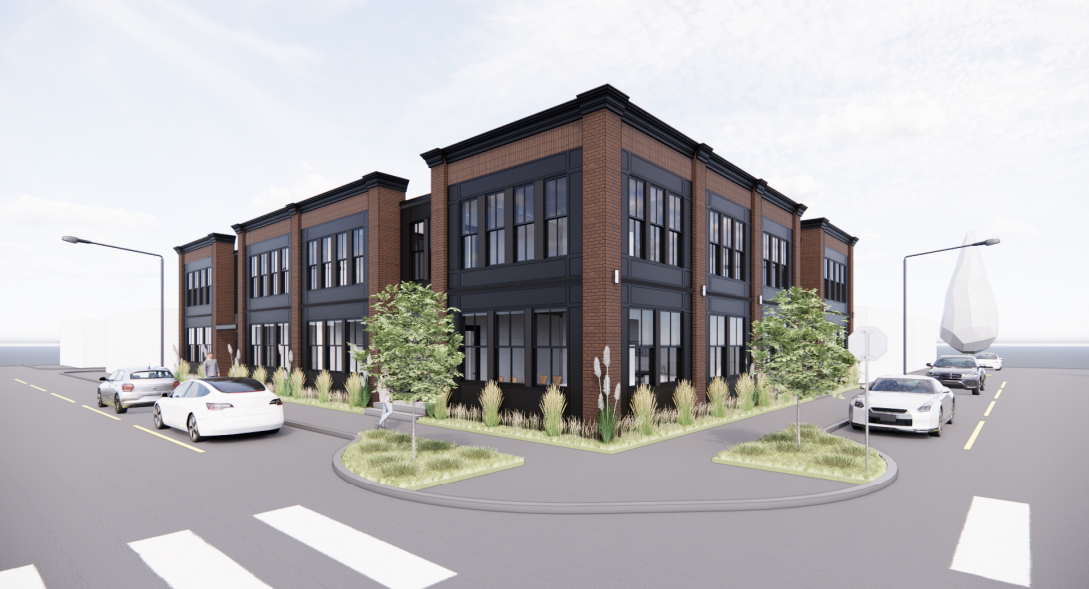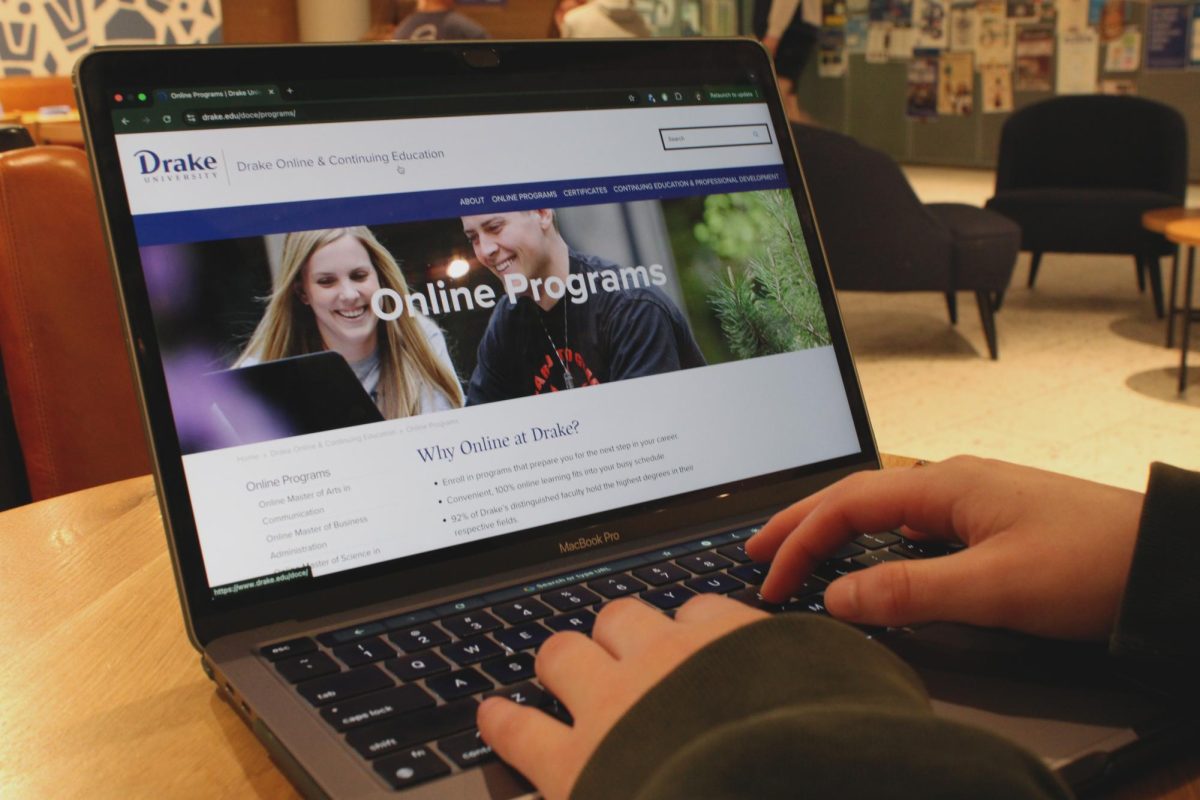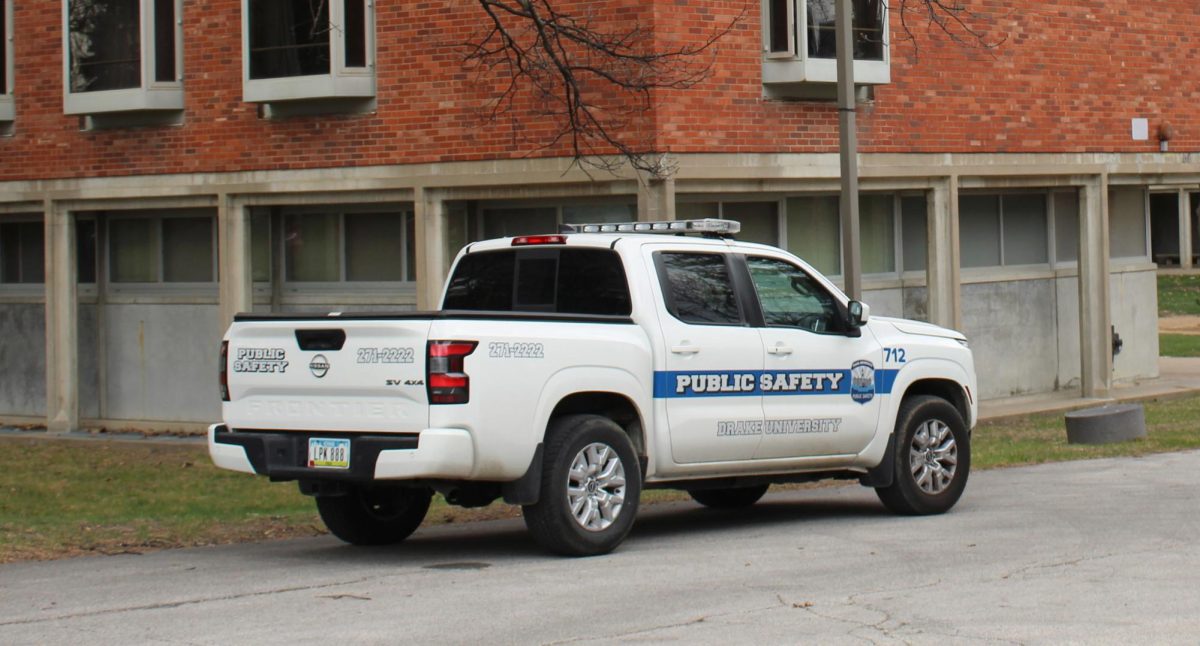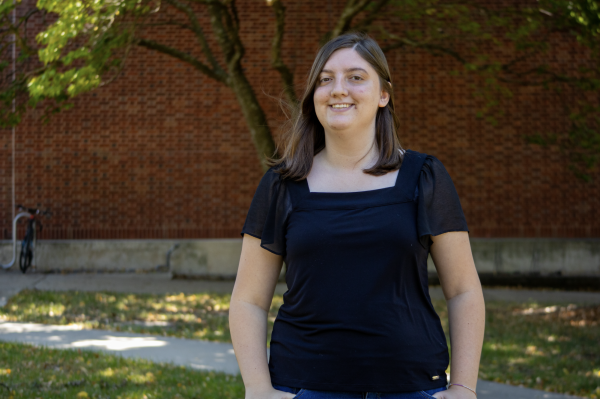In 2021, the Drake Municipal Observatory celebrated its 100th anniversary. In its existence, the observatory has hosted astronomical research, public nights, and various events. This year, it took steps with the purpose of hosting more people and better fulfilling founder Daniel Morehouse’s goals of public education: being open to the public of Des Moines and teaching everyone about astronomy.
In 1921, Morehouse established the Drake Municipal Observatory, a partnership between the city of Des Moines and Drake University. The city granted the land, and the university furnished the observatory with materials, making sure to keep it open to the public at reasonable times.
“That’s what the observatory was founded for, to be an educational resource for the metro public,” said Herb Folsom, a professor of physics at Drake University and an observatory lecturer.
Folsom began lecturing at the observatory in the fall of 2022. Both he and former lecturer Herb Schwartz had the impression that there would be no lectures unless someone stepped up.
According to Schwartz, almost every recent president of Drake University has tried to get the observatory closed.
“It was the public of Des Moines and the reaction the public gave that forced them to continue programming,” Schwartz said.
The observatory has hosted groups such as the Central Iowa Figure Skating Club after their competitions, giving tours of the observatory and letting them look through telescopes. Folsom hopes to host more groups like this, such as the Boys and Girls Club or public schools in the area. He also mentioned an interest in private events such as birthdays or anniversaries.
“We want to branch out and start reaching more of the community other than just that one public night a week,” Folsom said.
Athanasios Petridis, a professor of physics at Drake, helped expand guitar concerts from Heart of Iowa Guitar Society from yearly to bi-yearly, with one concert taking place during the spring equinox and another taking place during the winter solstice.
“We’re getting more people in here, which is great,” Schwartz said. “But we still have too many people who didn’t know this even exists. Drake was founded on astronomy.”
A large telescope made in the 1880s was gifted to the university from cofounder Francis M. Drake, originally used in the science hall on campus. Because of the hall’s problems with light pollution and a rickety infrastructure, Morehouse created the new Drake Municipal Observatory on the highest point in Des Moines, where he moved the telescope.
“At the time it was built, it was way out in the boondocks, but our boondocks have moved,” Schwartz said.
In part because of an increase in light pollution from the expanding city, the purpose of the observatory shifted from research to an educational center for the public.
“It’s not a cutting-edge observatory to look at the sky because it’s right in the middle of the city,” Folsom said. “It’s engineered more for public education.”
The observatory’s current goal with programming and outreach is making more people aware of it and its events. When Folsom asks his students in class who knows about the observatory’s existence, few do.
Julie LaFranzo, outreach and communications coordinator at the observatory, created an Instagram account to help promote the observatory and astronomical information. The observatory also has a Facebook page to promote events.
In order to expand the programming, they need to increase the amount of volunteers.
According to LaFranzo, there will be a workshop to help volunteers learn about the job and relieve the pressure of knowing everything. What she looks for is a desire to learn and educate about the observatory and its history.
Because of the state of the copper dome, the observatory cannot utilize the large telescope, which had been used for research in the observatory’s past. According to Folsom, the observatory requires around $600,000 to fix the dome.
“We don’t have access to our biggest resource,” LaFranzo said.
According to Folsom, observatory renovations will happen in phases. Recently, the city of Des Moines funded the first phase, renovating the observatory’s foundations to prevent water from leaking into the basement, which will be done by May 2023. From his understanding, Drake is responsible for fixing the dome and is waiting on a large donation to fund it.
Smaller renovation priorities include a new metal roof for the stairway to prevent plaster flakes and fixing the observation deck’s guard rail. The observatory has been raising money on its own as well.
This year, observatory staff also created a museum full of items from both the observatory and physics department. Once the renovations to the observatory’s foundations are complete, staff will be able to expand the basement museum. One possible room will be a telescope workshop where students can learn to assemble telescopes.
Folsom’s goal with the museum is to have enough exhibits that he can rotate materials in and out.
“The observatory and the telescope were used for some serious scientific work many years ago,” Petridis said. “I would like to learn more about these activities.”
In the future, Folsom is interested in branching out to involve other departments in the observatory’s work. Some examples would be exploring the connections between astronomy and psychology or the history department involved in the historical aspects of the observatory.
Part of connecting with the psychology department may take place in “therapy nights,” based on comments staff received about attendees gaining relaxation from looking at the stars.
“They are specifically designed for people with depression or anxiety so that they can come and see the stars and gain a perspective on the rest of the world and calm themselves,” LaFranzo said, adding that the nights would not have actual therapists.
The observatory’s main goal is still teaching people about astronomy, especially since astronomy classes are often limited to colleges.
“Our public nights do that for young kids. They also do it for adults that maybe never had an opportunity but wanted to know more about astronomy,” Folsom said. “That’s the outreach to the public, to be able to educate people about astronomy that wouldn’t have had an opportunity otherwise.”

